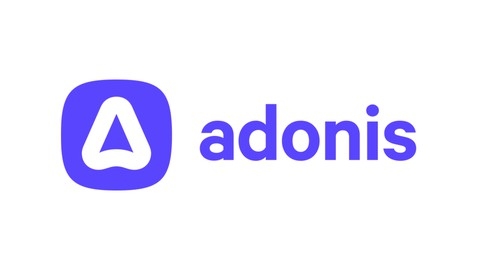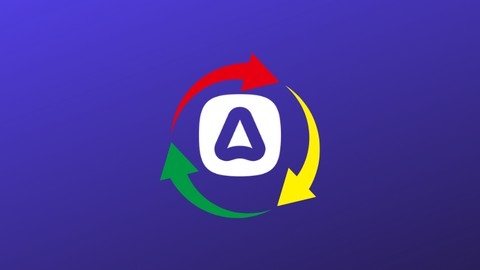AdonisJS is a powerful Node.js web framework that offers a structured and efficient way to build modern web applications.
It provides a robust set of features like a built-in ORM, templating engine, and authentication system, making it a popular choice for developers looking to build scalable and secure web applications.
Mastering AdonisJS can open doors to exciting career opportunities in web development and empower you to create dynamic and engaging web experiences.
Finding the right AdonisJS course on Udemy can be challenging, with countless options vying for your attention.
You’re looking for a course that goes beyond theory and provides practical experience, real-world projects, and clear explanations to truly grasp the nuances of this framework.
For the best AdonisJS course overall on Udemy, we recommend Learn AdonisJs: from zero to deploy.
This comprehensive course guides you from the basics to building a full-featured podcast application, covering everything from setting up your development environment to deploying your application to the cloud.
The hands-on approach and focus on building a real-world application make it a fantastic choice for both beginners and experienced developers.
This is just the beginning of our exploration into the best AdonisJS courses on Udemy.
We’ve curated a collection of top-rated courses tailored for different learning styles and goals.
Keep reading to discover more options and find the perfect course to kickstart your journey with AdonisJS.
Learn AdonisJs: from zero to deploy
The course covers everything you need to build a full-featured podcast application using AdonisJS.
You’ll start by learning what AdonisJS is and how it compares to other Node.js frameworks like Express.
The course then guides you through setting up your development environment, including installing the Adonis CLI, creating an AdonisJS application, and configuring the database.
One of the key topics covered is the Lucid ORM, which you’ll use to define your application’s models, migrations, and relationships.
You’ll also learn how to seed your database with sample data.
The course dives deep into user authentication, covering sign up, sign in, password reset, and account management features.
This is crucial for building a secure and user-friendly application.
The main focus of the course is building a podcast application.
You’ll learn how to create, edit, and delete podcasts, as well as upload episodes and allow users to subscribe and unsubscribe.
The course also covers browsing podcasts by category and implementing features like playing and downloading episodes.
Middleware is an important concept in AdonisJS, and the course covers creating authentication and guest middleware to control access to certain routes and features.
The course also teaches you how to use the Edge templating engine to create a master layout and render views.
You’ll also learn how to set up and use Bulma CSS for styling your application.
Pagination is another key topic, with the course showing you how to create a reusable pagination component.
Finally, the course covers deployment, with instructions for deploying your application to Heroku and Digital Ocean.
From Beginner to Pro: AdonisJS 5 for Web Development (2023)
This course starts by introducing you to the basics of AdonisJS and setting up your development environment.
You’ll learn about the MVC (Model-View-Controller) architecture and how to create your first AdonisJS application.
From there, the course dives into routing, covering different types of HTTP requests, route parameters, validations, and route grouping.
You’ll also learn about controllers and how to handle requests using methods.
The course then explores views, teaching you how to use the Edge template engine to create and render views, pass data to views, and work with conditionals and loops.
You’ll also learn about layouts, partials, and components.
Database management is a crucial aspect of web development, and the course covers it in-depth.
You’ll learn how to create and run migrations, perform CRUD (Create, Read, Update, Delete) operations, use database seeders, and work with raw query builders.
The course also covers SQL injection and the ORM (Object-Relational Mapping) feature of AdonisJS.
As you progress, you’ll build two real-world projects: Todohut (a to-do app) and Perest (a semi-clone of Pinterest).
These projects will reinforce your understanding of various concepts, such as authentication, middleware, CSRF protection, OAuth integration (Google, GitHub, Facebook), file uploads, and working with AWS S3.
The course also covers testing, API development, setting up MySQL and PHPMyAdmin on Ubuntu, and integrating with a React client application.
Throughout the course, you’ll work with essential AdonisJS features like the Drive package, bouncer (for authorization), flash messages, cookies, and more.
The instructor provides clear explanations and hands-on examples, ensuring you gain practical experience with AdonisJS web development.
Build A RESTful API With AdonisJS 5
The course covers everything you need to build a RESTful API with AdonisJS 5, from setting up the server and database to implementing authentication and CRUD operations for threads.
You’ll start by learning how to create an API server and set up the database.
Then, you’ll seed the database with categories, which will be useful for organizing your threads.
Next, the course dives into authentication, teaching you how to set up API tokens, register new users, and log them in.
This is crucial for building a secure API.
The core of the course focuses on threads, where you’ll learn how to create, fetch, update, and delete threads.
You’ll also learn how to reply to threads, which is a key feature for any forum-like application.
It also covers important topics like pagination, filtering, and sorting, which are essential for building a robust API that can handle large amounts of data efficiently.
To ensure your code is maintainable and follows best practices, the course includes a section on refactoring, where you’ll learn how to use route resources and prevent unauthorized access.
Finally, you’ll learn how to format your API responses in a consistent and user-friendly manner.
The course even includes a bonus lesson on migrating an application built with the preview version of AdonisJS 5 to the stable version, ensuring you’re up-to-date with the latest changes.
Build A TodoList with AdonisJS and Electron React
This course will guide you through building a TodoList application using AdonisJS for the backend and Electron React for the frontend.
You’ll start by installing AdonisJS and setting up the ORM to interact with a database.
After running the necessary migrations, you’ll create a REST controller to handle CRUD operations for your todos.
The course covers the basics of the AdonisJS ORM, teaching you how to query and manipulate data using the provided documentation.
Once the backend is set up, you’ll run the REST API to serve data to the frontend.
Moving to the frontend, you’ll create an Electron project and add a UI library to build the user interface.
You’ll then create a service to communicate with the AdonisJS backend and implement CRUD functionality for managing todos.
The course walks you through creating a boilerplate for the TodoList app, setting up state management with React, and building reusable components.
You’ll create a Todo Item component to display individual todos and add tabs to filter todos based on their status.
Finally, you’ll integrate a form to allow users to create new todos, completing the full-stack TodoList application.
Build A TodoList with AdonisJS and SolidJs
The course starts by guiding you through setting up an AdonisJS backend.
You’ll learn how to install AdonisJS and its ORM (Object-Relational Mapping) library, run database migrations, and create a REST controller.
The course covers the basics of working with the AdonisJS ORM, including consulting the official documentation.
Once the backend is set up, you’ll move on to creating the TodoList application using SolidJS, a reactive library for building user interfaces.
You’ll install SolidJS and create the necessary service and UI components for the TodoList, such as the TodoListItem component and methods for managing todos.
The course walks you through building the UI for the TodoList component, allowing you to create and delete todos.
Throughout the course, you’ll gain hands-on experience with key concepts like installing dependencies, running APIs and applications, working with ORMs, creating REST controllers, and building UI components with SolidJS.
The course covers the essential steps for developing a full-stack TodoList application using the AdonisJS backend framework and the SolidJS frontend library.
End-to-End Authentication In AdonisJS
You will start by getting the starter project and installing the auth module.
The course covers user registration, including sending and verifying email addresses, as well as resending verification emails.
For logging in, you’ll learn how to handle scenarios with and without email verification.
The course also covers the “remember me” functionality and password reset, including requesting a reset and updating the password.
Protecting routes is a crucial aspect covered, where you’ll learn how to allow access to authenticated users and guest users.
The course explores different techniques for intended redirects, such as using sessions and query strings.
Finally, you’ll implement the logout functionality, completing the end-to-end authentication system.






